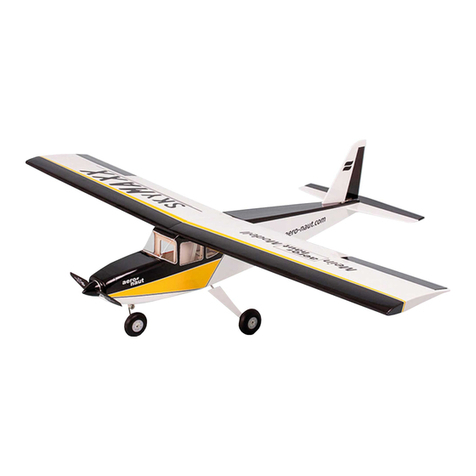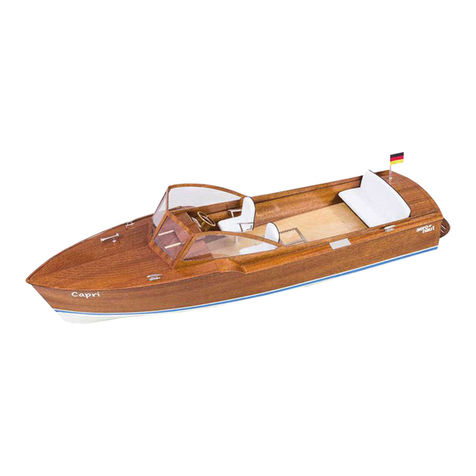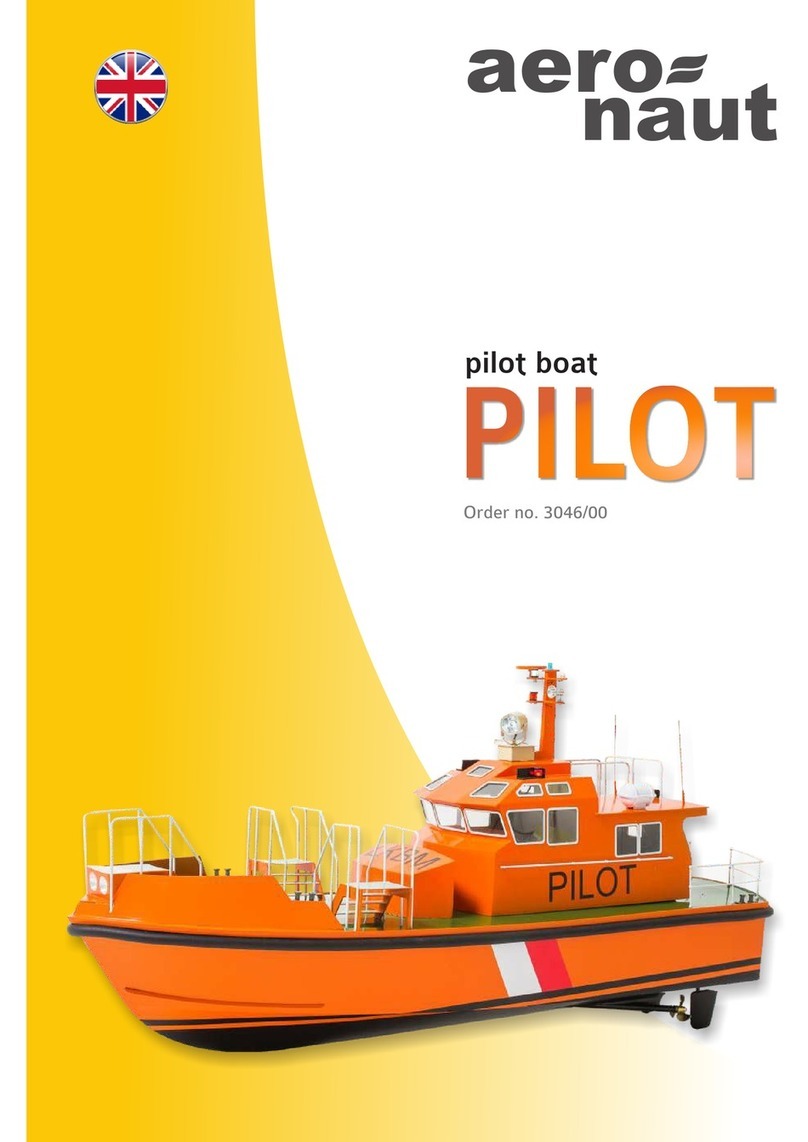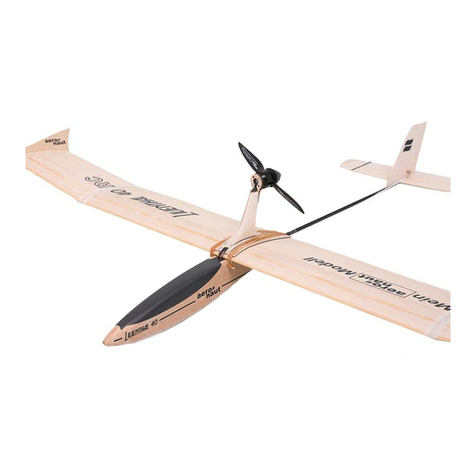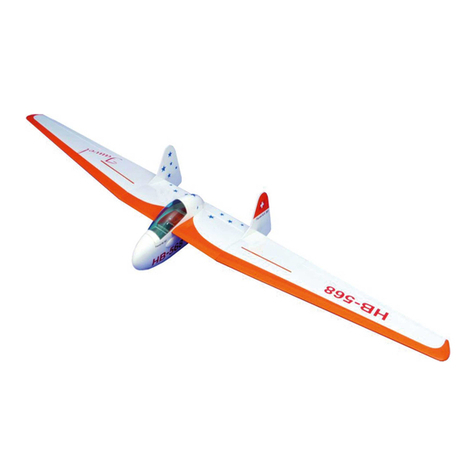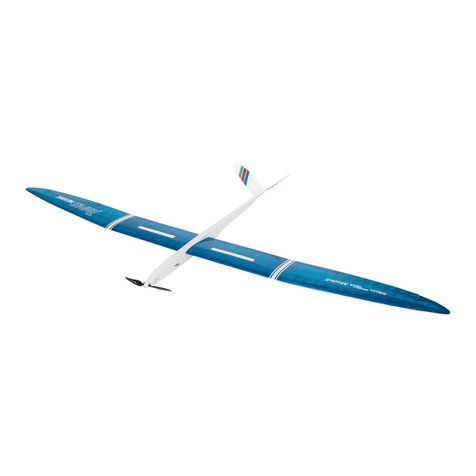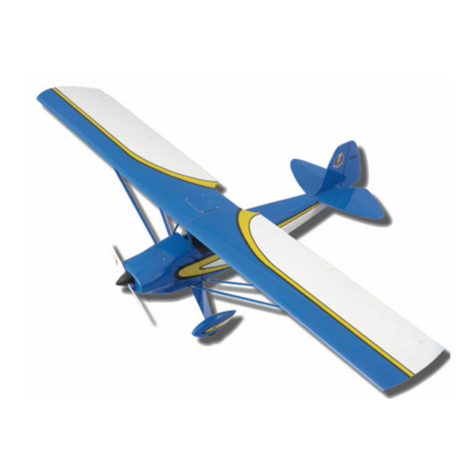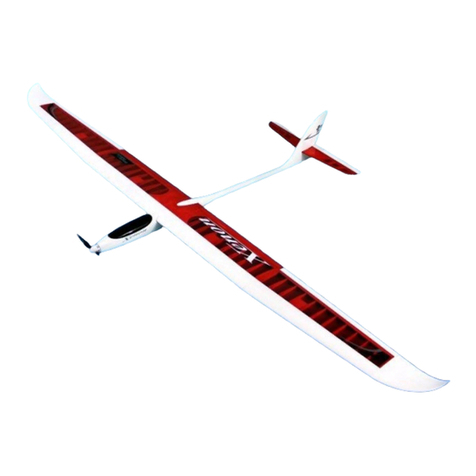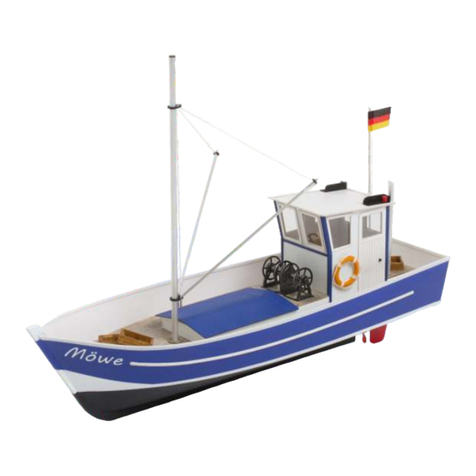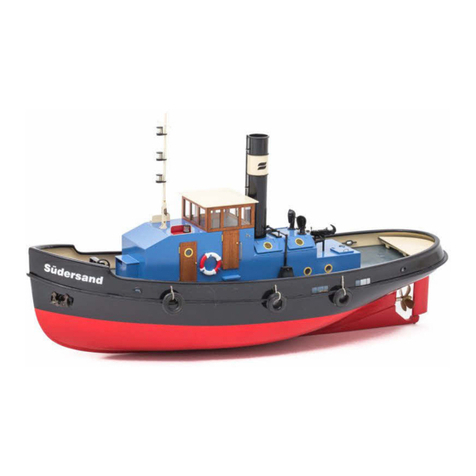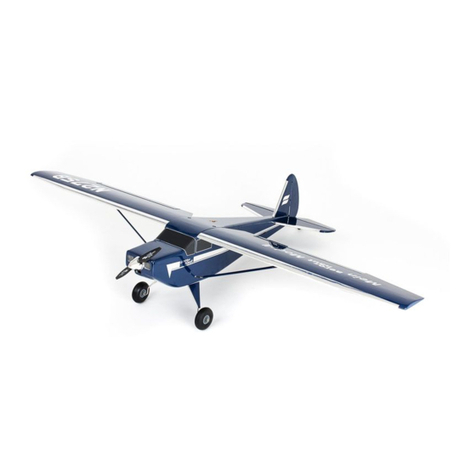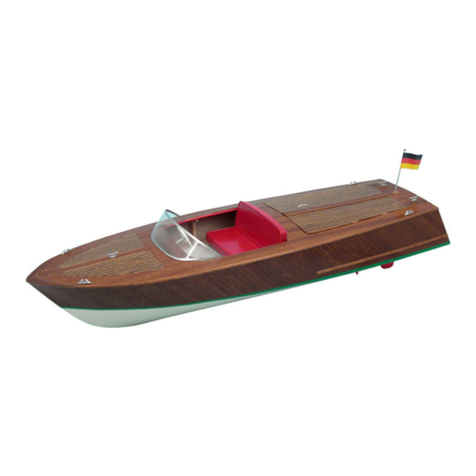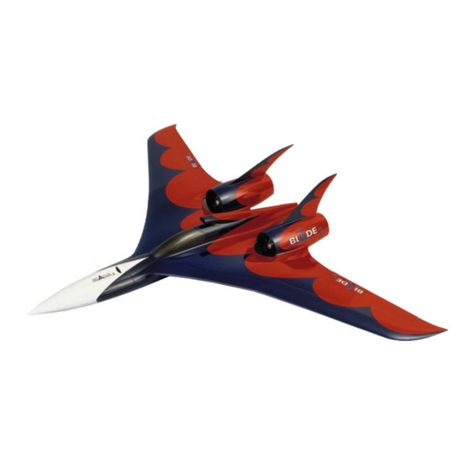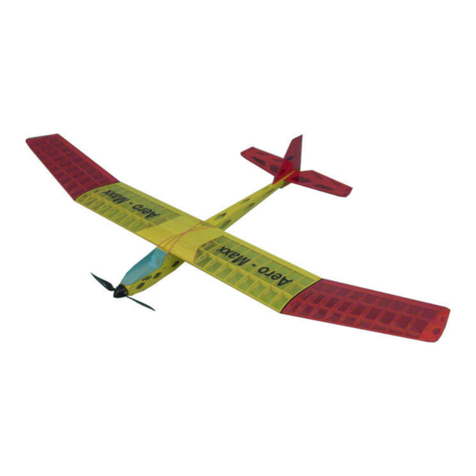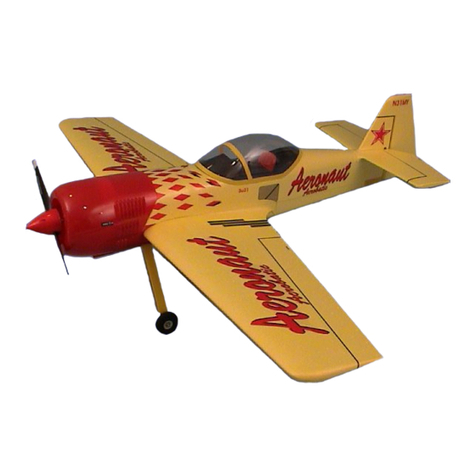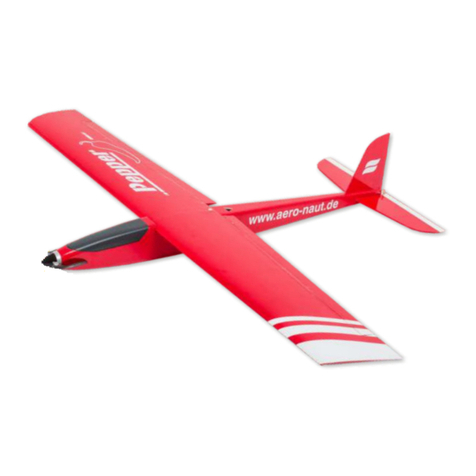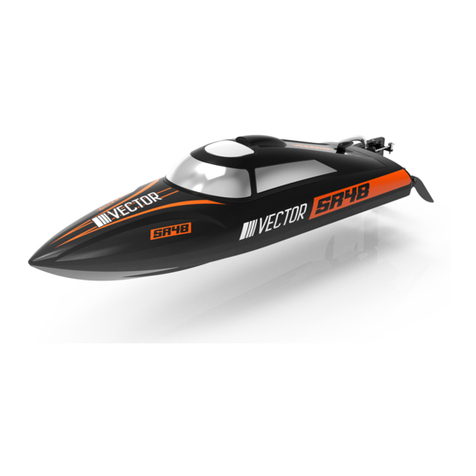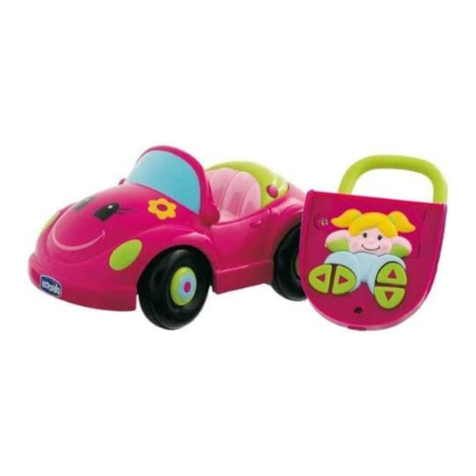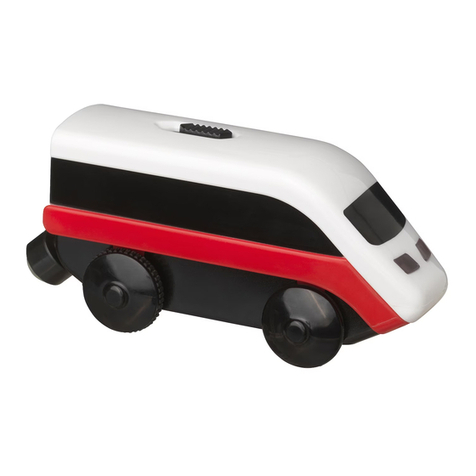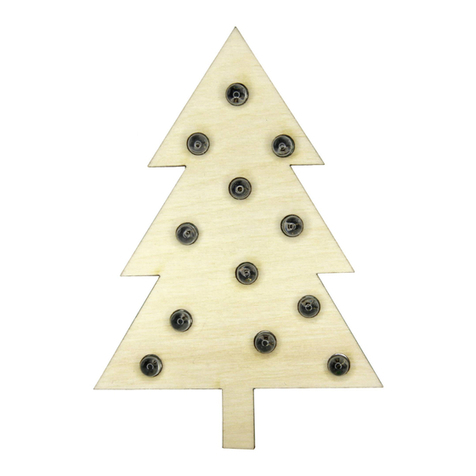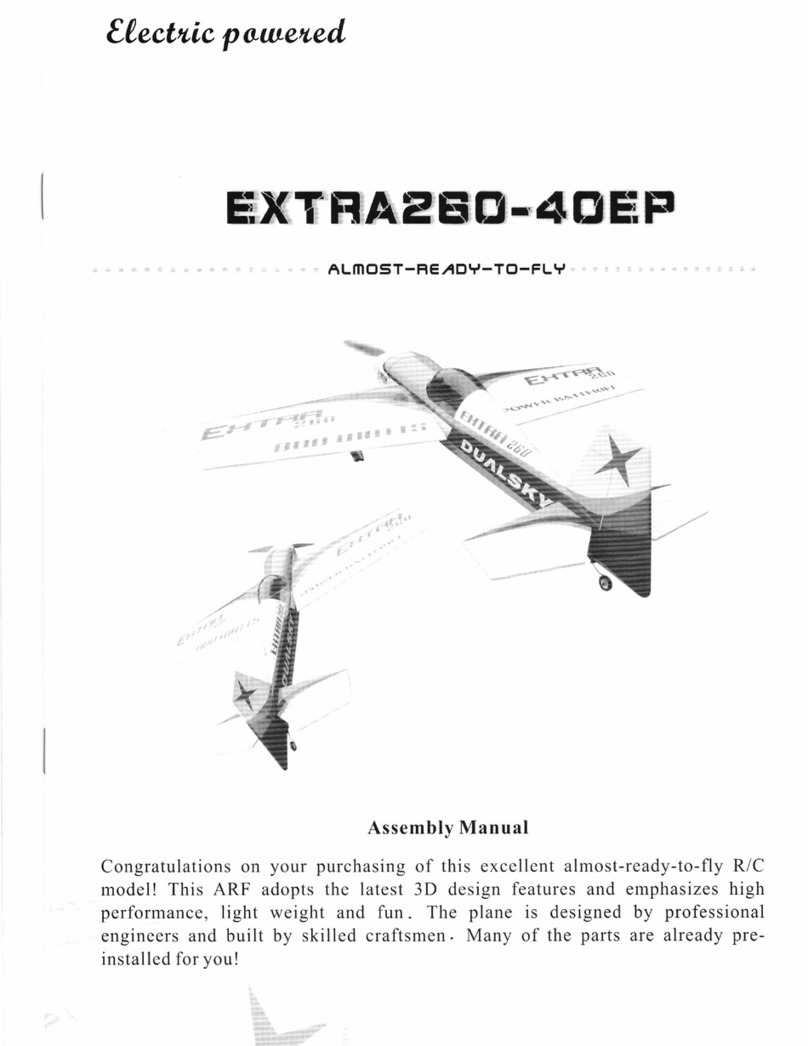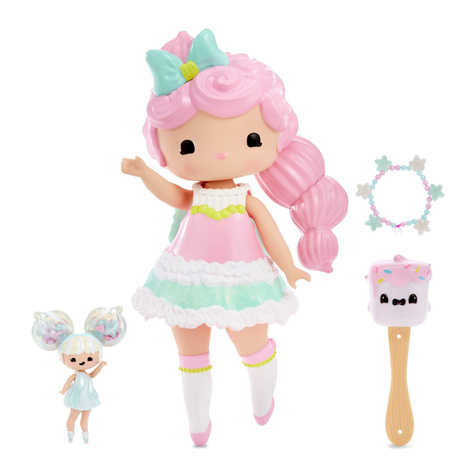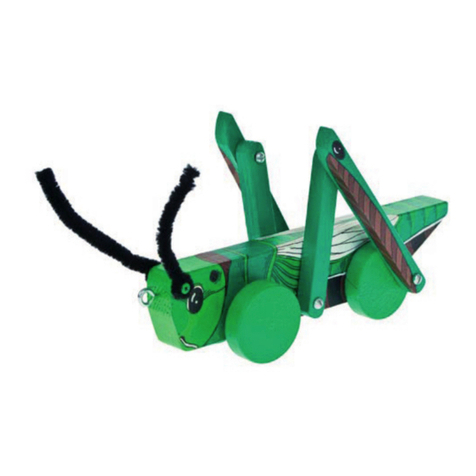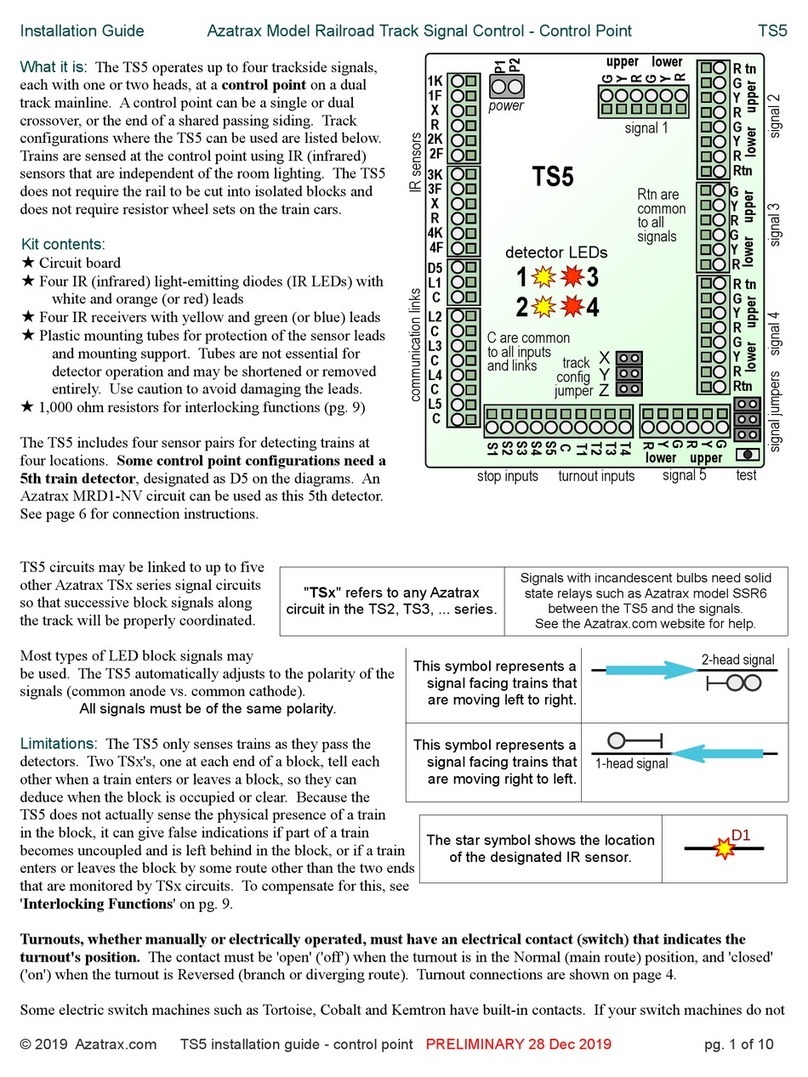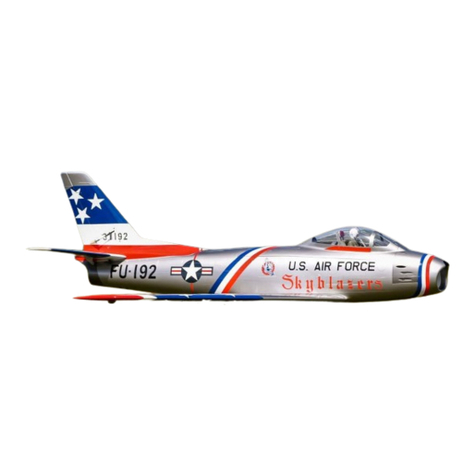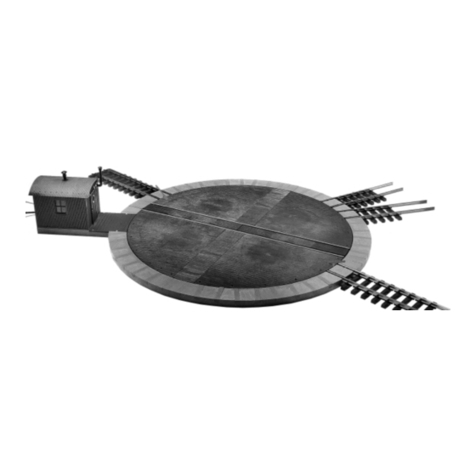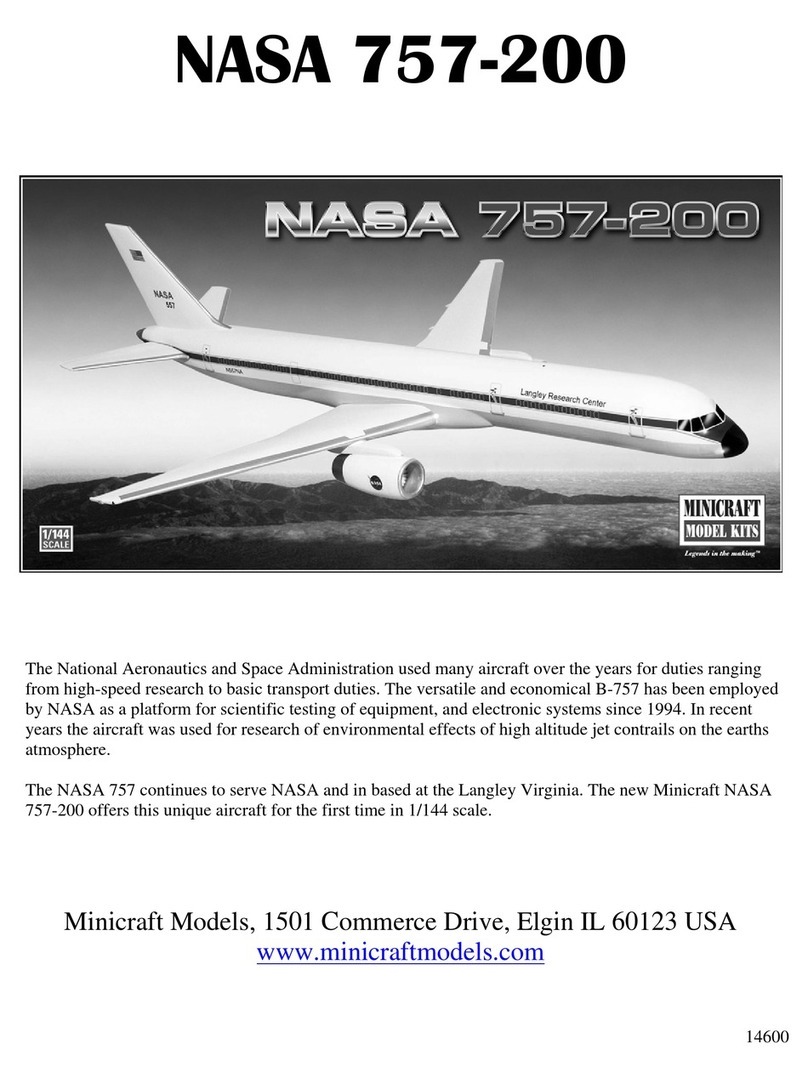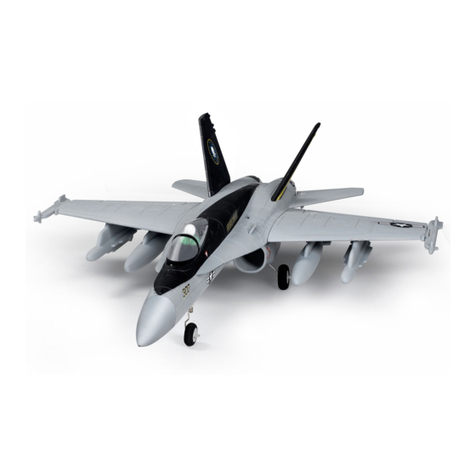3 4
Fig. 8
26
25
24
27
16
Fig. 7
7. Drill holes in the brass brackets 25 exactly as shown in
the drawing alongside.
Fit the two 80 mm lengths of brass rod 26 through the holes.
8. Fit the two brass brackets 25 in the openings in the deck
from the underside.
The upper rod 26 should rest against the underside of the deck
33; the lower rod on the RC plate.
Glue the brass brackets to the rear sealing plate 24, taking
care to produce watertight joints (e.g. using Stabilit express -
not included in the kit).
9. Glue two spruce strips 16 to the underside of the deck to act as
stop-piece for the two stern plates 27.
Allow the glue to set hard, then glue the two stern plates 27 to the
sides of the brass brackets.
Glue the stern plates to the RC plate and the stop-pieces 16 on
the underside of the deck using two-pack adhesive (Stabilit
express). The two brass rods in the brackets should be fixed in
place using plenty of the same adhesive.
When the boat is operating, these glued joints absorb all the
forces exerted by the coupling.
Make sure that these joints are watertight.
44
chamfer on the outside
Fig. 14
46
47 12
43
Fig. 12
BSR
34
13
Fig. 13
22 23 21
Carriageway deck 45 not shown !
34
23
22
12
10. Glue parts 22 and 23 together as shown.
Glue these assemblies to the outside of the inner hull walls
12.
Glue these assemblies to the deck, applying adhesive on
both sides.
11. Insert the swivel bushes 46 in the holes in parts 22; note that the tubes must
not project on the inside. Slip the shaft 47 through the tubes to ensure correct
alignment. Glue the bushes to parts 22, and leave the shaft in place while the
glue hardens.
12. Open up the bow thruster stubs (BSR).
Slide the extension tubes 43 through the holes in the bow thruster
box from the outside.
Working inside the box, fit the extension tubes 43 on the bow
thruster stubs. The glued joints between these parts must be
watertight.
Apply the adhesive to the joint surfaces of the stubs before pushing
the extension tubes onto the housing.
Don't glue the bow thruster to the hull at this stage, as it has to be
aligned correctly with the deck later.
Thread the two cable guide tubes 34a through the frames, and glue
them in place. Insert the tubes 34b through the deck and the stop-
pieces 23. Heat them gently using a heat-gun so that they curve
smoothly, without any kinks. The tubes 34a and 34b are joined
using an outer sleeve 34c; glue these parts together.
Seal the openings in the deck and the stop-pieces 23 carefully; they
must be watertight.
13. Glue the bow plate 13 to the hull, the deck 33, the inner bearing
plates 22 and the stop-pieces 23.
Allow the glue to set hard, then temporarily slide the carriageway deck
45 into the hull to aid alignment of the forward sealing plate 21.
Fit the forward sealing plate 21 through the bow plate 13 from the
underside, then through the slots in the carriageway deck 45.
Permanently glue the sealing plate to the bow plate and parts 22 and
23.
When the glue has set hard, remove the carriageway deck 45 again.
Assemble the bollards by gluing together parts 71 and 72 (see Fig. 15).
Fit the bollards in the holes in the deck, and apply glue inside and out to
secure and seal them.
14. Chamfer the holes in the outside of the outer hull sides to a
depth of half the material thickness.
Turn the hull on one side, and apply glue to all the frames and rails.
Fix one hull side in place using strips of adhesive tape.
Turn the hull onto the opposite side.
This prevents the adhesive running out of the joints.
Don't glue the bow thruster in place at this stage.
glue
Fig. 15
don‘t glue
71
72
15. Use two-pack adhesive to glue the swivel bushes 46 in the hull
sides 44. Remove the flap shaft 47.
Sand off excess adhesive flush with the outside of the hull wall.
55
50
51
52
53
54
48
49
Fig. 16
16. Thread the five frames 53 onto the tube 48 and the rod 49, and space
them out evenly.
Position this assembly on the bottom plate 50, and glue the parts together.
Glue the six rails 54 to the rounded end of frames 53, taking care to
produce watertight joints. Leave this assembly on a flat surface until the
glue has set hard.
Glue the two upper flap panels 51 and 52 to the frames.
Sand the rails 54 to form a rounded face. If there are gaps between them,
fill them with more glue. Glue the two cable guide tubes 55 in the flap.
Install the flap, and check that it swivels smoothly.
If there are points where it rubs, sand them back.
The flap must rotate freely.
It does not need to be watertight.
Any water which gets inside the load bay can escape again under the flap.













